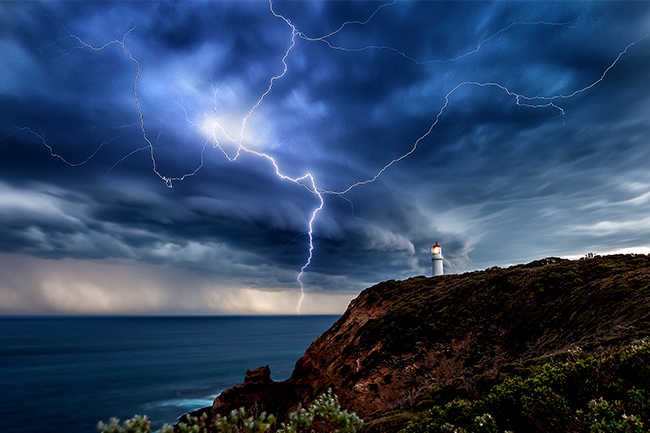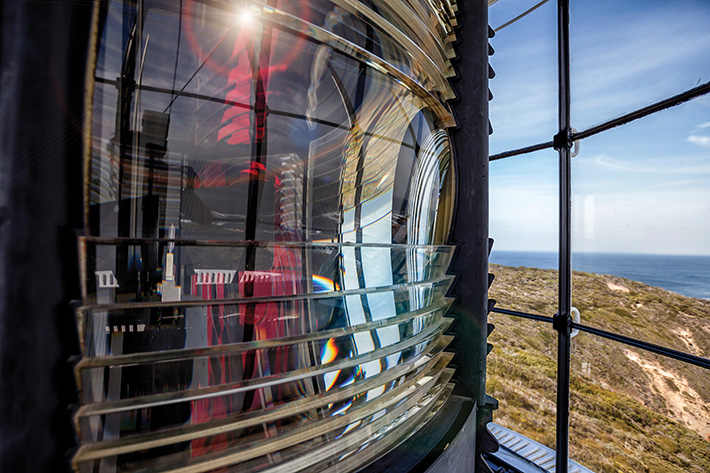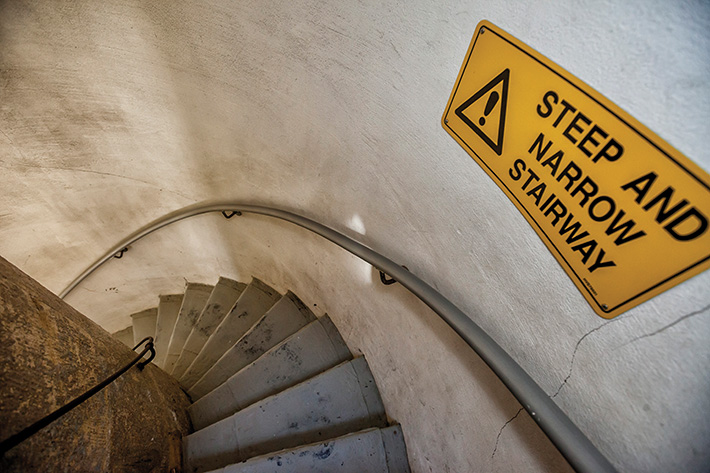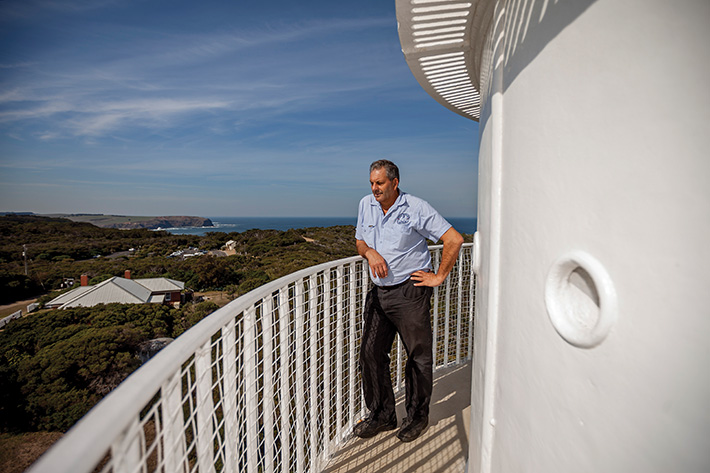
For 20 years Tony and Prue Sheers have been keepers of the lighthouse at Cape Schanck, upholding a tradition of a long list of lighthouse keepers who have had the torch passed over to them.
As watchers over the lighthouse, the Fingal couple have had the rare privilege of guarding and protecting one of the areas most precious treasures at the southern end of the peninsula, and upholding a tradition that is steeped in history.
For the Sheers, having occupation ‘lighthouse keeper’ stamped in their passport was an unexpected surprise in their lives, and came at a time when the couple were considering semi-retirement.
“One day Tony just came home from work and said ‘How would you like to run a lighthouse?’” said Prue with a laugh. “That was 20 years ago and we are just finishing up now.”
As a couple who have been involved in hospitality and running b&b’s all their life, taking over the lighthouse was a piece of cake, and with Prue’s fascination for history it was a match made in heaven.
“I love history so immediately delved into the history of lighthouses, how the Australian lighthouse families lived and how our lighthouses operate differently to overseas,” said Prue of the lighthouse that has been shining since 1859. “It is the last one in Victoria to run to full capacity,” said Tony, whose job has been to maintain the lighthouse and be a tour guide with wife, Prue. “We took over two decades ago from Rod Tilly. “It is one of the only lighthouses to have the clockwork mechanism that still works. Most of the lighthouse keepers would have literally thrown them over the cliff and into the ocean when they were phased out by electric mechanisms.”

The Cape Schanck Lighthouse starts beaming at dusk and works on sensors and mains power electricity, with a backup generator. “We are known as a landfill lighthouse which is used as a backup for the GPS which most boats have now. But if they sink or start taking in water, the GPS can fail and so we are here for old fashioned navigation,” said Tony. “Even with GPS, the Tasmanian ferry uses our light as a landmark to turn right towards Tassie.”
In the early days of the mid 1800s it took three families to look after the lighthouse, but fraternisation was frowned upon, according to Prue. “They were trying to avoid any nasty love triangles forming,” she says with a laugh. “Food supplies were bought for the three families via boat but the Cape Schanck lighthouse keepers were lucky enough to also have local farmers in the area for supplies.”
A far cry from all those years ago, yet you can still feel the history as you walk up the 59 spiral steps to the lighthouse tower, constructed of pure limestone where the original counterweight still hangs down the centre.

“The beam still shines 27 nautical miles out to sea, or 48 kilometres in layman’s terms, and is 21 metres tall. It has a 1000kw globe and still sits in its original mercury bath. We have so many original features, we could crank up the mechanisms and have it working like the old days,” said Tony. “The lighthouse keeper used to have to wind the handle 88 times to ensure the light kept shining; now we check it out three times a day. The light characteristic is the Morse code letter ‘N’, a long signal of 10.8 seconds followed by a flash. Depending on the bearing of the light, the colours are either white or red. The powerful lantern is a million candela and a first order Fresnel lens, which was installed in 1915. It was also the first lighthouse tower to be built with stone stairs.”
While the light still shines bright across the sea every evening, in late April lighthouse keepers, Tony and Prue had to say goodbye to their beloved lighthouse, B&B accommodation and its wonderful living history, but the memory of their two decades there burns brightly in their hearts.

Photos by Yanni





